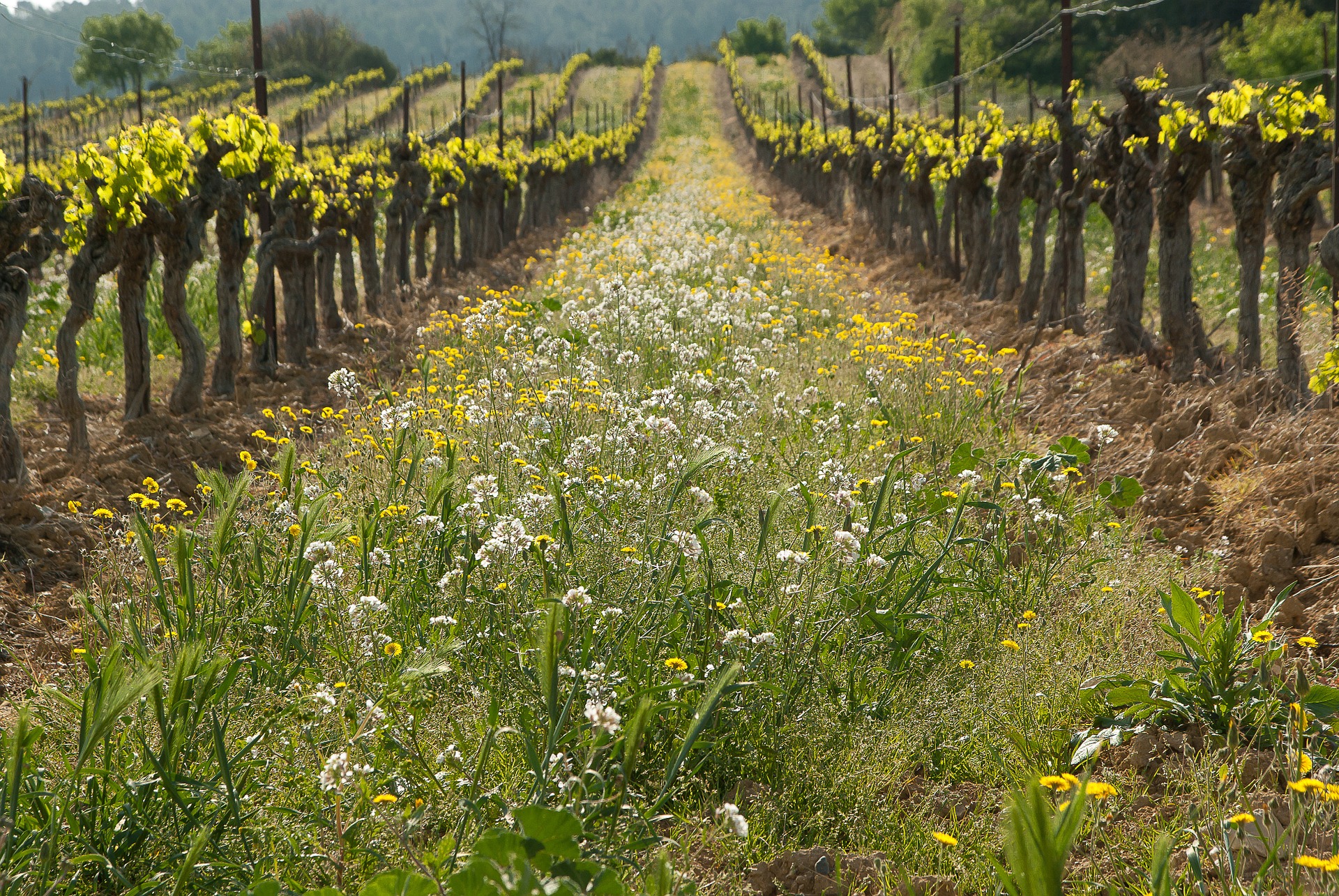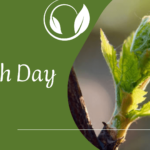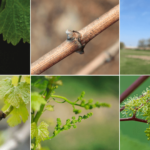In viticulture, cover cropping refers to crop planting between and under the rows of vines, in order to improve the management of the vineyard. Cover cropping is no new invention, even though lately with the increased interest in organic and sustainable viticulture, there is a lot of buzz about that topic. Cover crops have been grown in vineyard since Roman times. At that time bell beans were planted between the rows of vines. Today, more and more vineyards across the world are practicing cover cropping in a different form, on a part or on the whole inter-row soil surface.
Advantages of cover cropping in the vineyard
In a vineyard, cover cropping is mainly used as the alternative to the herbicide use. Not only that the use of cover crops in comparison to herbicides benefits the environment, it also reduces the vineyard expenses, since the costs of seeding and maintaining cover crops are often lower. Apart from no herbicide use, cover crops improve the soil and vine management and the grape in the next ways:
- Protect the soil from erosion, especially in the vineyards on slope terrain they prevent soil from splashing.
- They contribute to a better soil structure, increase organic content in the soil and with nutrients (also nitrogen content) which are necessary for the growth of vines.
- Improve the water-holding capacity of the soil.
- Improve biodiversity in the vineyard, since organic matter is a food source for several macro- and micro-organisms. Vineyards with cover cropping usually have a bigger population of earthworms, which are good indicators of soil fertility.
- Improve fauna above the soil – cover crops can provide habitat and food for beneficial insects, such as: generalist predators, parasitoid insects, spiders, and mites.
- Cover crops can provide (if not use otherwise) firm footing which makes vineyard operations, such as harvest, pruning, and spraying during the wet weather more feasible.
- They regulate vine growth and with that, they help to control the yield and quality of grapes and wine. According to the study made in Spain in Rioja Alavesa region, with temporary use of cover crops; vineyard with cover crops shows a reduction in the water availability in the vineyard, which reflected on one hand in a reduction of yield, but had a positive effect through the reduction of vigor (positive as the disease susceptibility is reduced), as well as in an improvement of the quality parameters of the must and wine. Note that cover crops have less impact on a mature vineyard compared to the young vineyards, due to the fact that in a young vineyard, the vines have a shallower root system which is competing with the cover crops for water and nutrients.
- Cover cropping reduces the vegetative vigor of a grapevine and therefore it’s susceptibility to grey mold and downy mildew.
Disadvantages of the cover cropping
Apart from all the positive effects of using cover crops in the vineyard, there are also some disadvantages which winegrowers must take into the consideration before sowing the cover crop.
- The need for specific equipment for sowing and maintaining cover crops; different equipment is needed for soil surface management in the inter-rows and under the grapevine rows. When vineyards are located on steep slopes mechanization may be impossible. In the vertical vineyard, cover cropping can be more costly since special equipment is needed to manage cover crops under the grapevine rows.
- Cover crops compete for soil resources with the grapevine, such as nutrients and moisture.
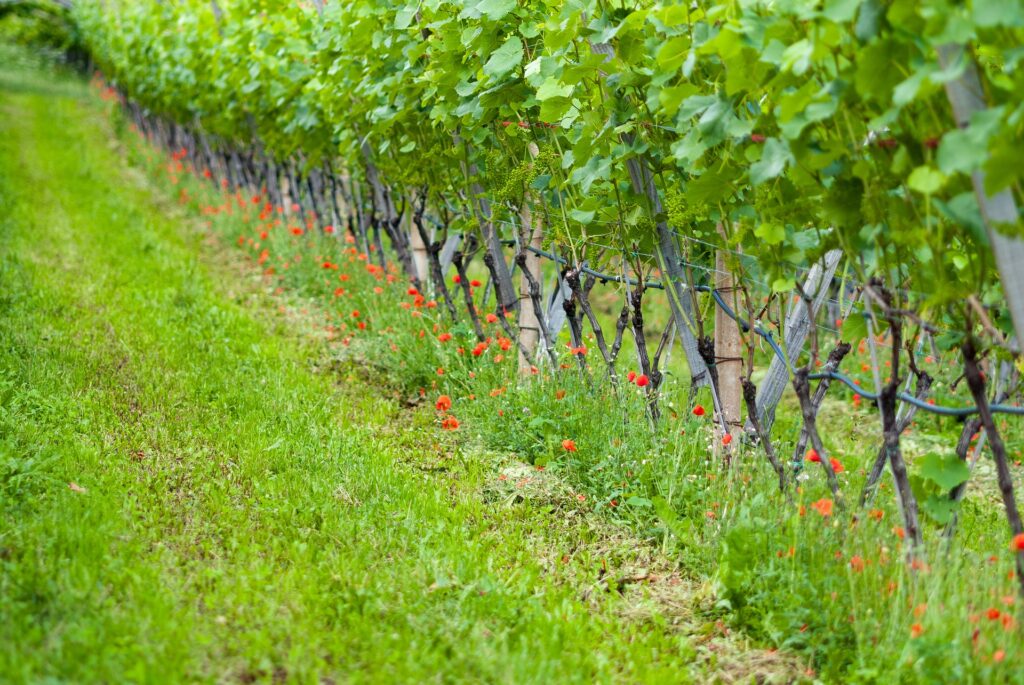
Which cover cropping practice to use?
There are several different cover cropping practices that winegrowers can choose from, and mainly they depend on: relative vigor, water availability in the soil, decisions on increasing or decreasing vegetative growth, and of course on the pest management practices. Some of the possibilities:
- Annually seeded and tilled cover crops: Cover crops are planted in the fall and then grown until spring, when they are mowed and tilled into the soil, to conserve moisture in the vineyard. In this system, some sorts of annuals that grow well during the cold months should be chosen, such as: annual small grains (barley, oats, triticale), winter peas, common vetch, bell beans, daikon radish,… There are two disadvantages of this farming system: it is tillage-intensive, and soil is exposed to sunlight during the summer.
- Non-tillage management with annual cover crop species – there are 2 possibilities:
- the vineyards are seeded with species that will reseed themselves on an annual basis, such as different clovers and/or grasses;
- the vineyards are seeded with annual cover crops that are not self-reseeding, such as oats, barley, peas, and vetch, etc. This approach is useful when tillage could cause erosion. Seeding is done in fall and then the cover crop is mowed and left to lie on the soil surface.
- Non-tillage management with perennial species: The following perennial species can be used in the vineyard as cover crops: fescue, turf selections of perennial rye grass, pasture selections of perennial rye grass, and orchard grass. Since many of the perennial grasses are very competitive with grapevine roots, they will have a big impact on vine vigor and are thus mostly used in vineyards with fertile soil. These cover crops are the good selection for vineyards that are prone to erosion, or there is a need to reduce dust in the vineyard.
- Also, native grasses can be used as cover crops. The good side is that grass does not require any special treatment – mostly just mowing. However, the native grass is not always competitive with the weeds. Therefore, when choosing native grass for a cover crop wise pest management practice is crucial.
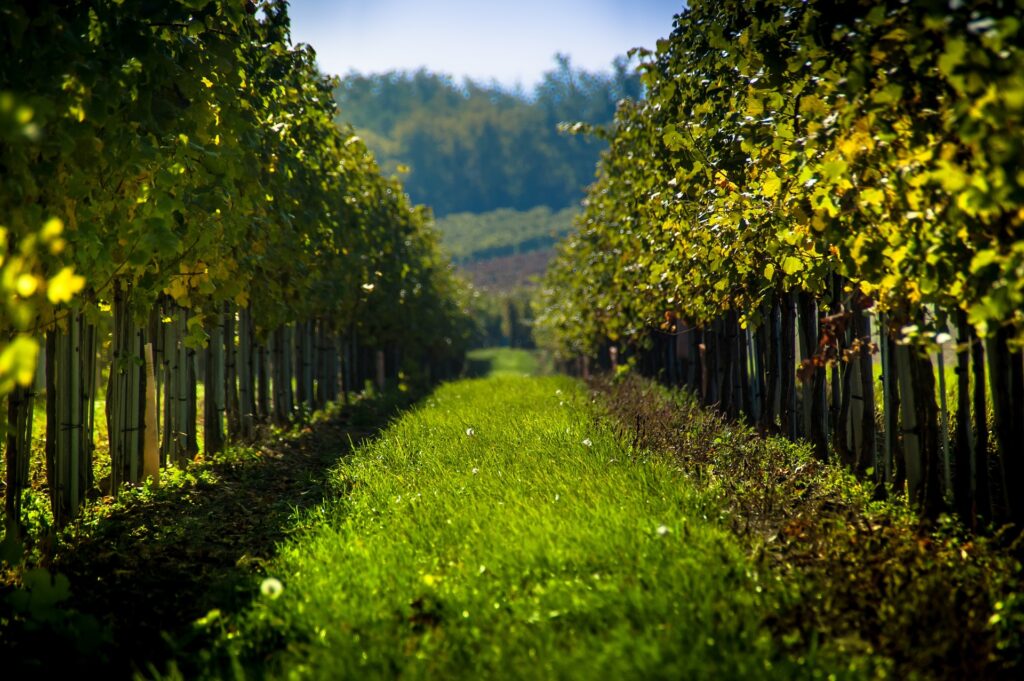
The question of legumes and cereals?
There are very “interesting” discussions whether legumes or cereals are a better choice for vineyard cover cropping. Since no vineyard is the same, this is merely a decision of a winegrower. However, it is important to choose according to the costs of operations, vineyard site-specific, and farm management practices. In connection with that, it’s good to know that the legumes root system in comparison to cereals and grasses provide less organic matter.
Winegrowers can choose to cover crop only every second row, therefore one row with the non-tillage system while every other row with tillage system, and then switch the rows after a few years; or even mix different cover crops in the rows. There are endless possibilities. What is important to know is that over time, cover crops can develop pests and pathogens. Therefore, winegrowers should carefully rotate crops. Since some pests and disease-causing organisms are host-specific, crop rotation can help in controlling them.
Note that cover crops need moisture for germination and good growth, so sow them in fall prior to rain or in the spring. They also have a specific need for nutrients to grow well, normally compost made of animal manure and grape pomace provide enough nutrient for cover crop and grapevine growth. Although at least every few years it is good to make a soil analysis to make sure cover crops and grape vines get enough nutrients for growth.
Conclusion
As described in this post, cover cropping has several benefits on the vineyard soil management, it improves the soil’s physical and biological properties. With proper cover cropping technique, winegrower can even influence on quality and quantity of the grape production. Since cover cropping is an alternative to herbicide use, it’s a good practice for more environmentally friendly viticulture. However, it’s not always easy for the winegrowers to find a trade-off between the advantages and disadvantages of cover cropping, especially in regions with drought conditions, bad soil and in the vineyards on the steep slopes. Cover cropping should always be chosen according to the vineyard site-specifics, style of farming, as well as yield, and quality objectives.
Sources:
The use of cover crops in vineyards can help control the yield and quality of grapes and wine; Elhuyar Foundation
Reducing herbicide use with cover cropping and tillage; Christian Gary and Marc Fermaud, INRA, France
Cover cropping system for organically farmed vineyards; Glenn McGourty, University of California Cooperative Extension
Cover cropping in orchards & vineyards; Fred Thomas, CERUS Consulting, and Ann Mayse and David Chaney, University of California

